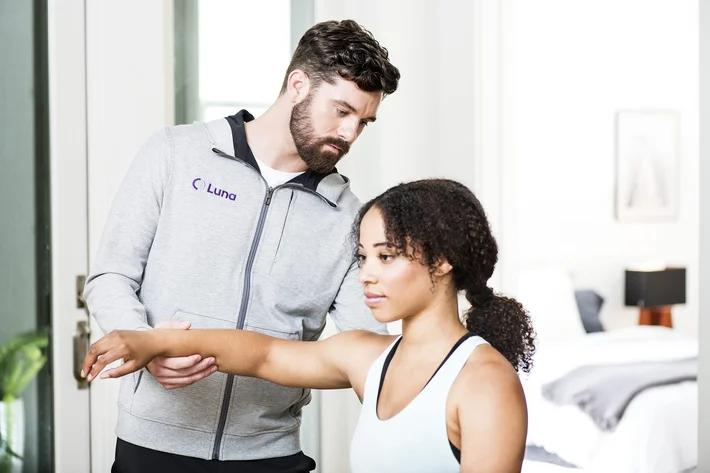Can’t Reach the Top Shelf Anymore? You May Have a Torn Rotator Cuff

Rotator cuff tears are a real pain in the shoulder—and in your everyday life. Simple activities like reaching the top shelf may be impossible to do without hurting yourself even more. While surgery is required to actually repair a rotator cuff tear, physical therapy is often the recommended treatment for them.
That’s because the goal of rotator cuff treatment isn’t necessarily to heal the torn tendon, but rather to relieve pain, improve strength, and restore shoulder joint mechanics. In fact, one study showed that patients who received PT for rotator cuff tears did just as well as those who had surgery.
Exercise the Pain Away
As part of your treatment plan, your physical therapist will likely prescribe a series of exercises. The American Academy of Orthopaedic Surgeons (AAOS) offers a comprehensive rotator cuff and shoulder conditioning program, which targets 10 muscle groups that surround the shoulder and support the joint, as well as the upper arm (biceps/triceps) and the upper back (trapezius and rhomboid muscles).
The conditioning program includes two categories of exercises:
- Strengthening the muscles that support your shoulder to keep your shoulder joint in place. Strong muscles help ease shoulder pain and prevent further injury. Some of these exercises include the standing row, external rotation with the arm abducted at 90 degrees, trapezius strengthening, and scapular retraction/protraction.
- Flexibility, to stretch the muscles that you strengthen. This helps restore range of motion (ROM) and can also keep you from getting hurt. Exercises include the pendulum, crossover arm stretches, passive internal and external rotations, and the sleeper stretch.
4 Tips for a Successful Conditioning Program
The good news is that most of these exercises require no or little equipment, only an elastic stretch band, hand weights, or light stick—such as a yardstick. The AAOS program provides four good tips to help you prevent injury and keep you moving:
- Do your warm-ups. Start with five to 10 minutes of low-impact activity. Walking or riding a stationary bike are two good options.
- Stretch. After doing your warm-ups, do your stretching exercises before the strengthening ones. Repeat the stretches to end your workout.
- Pay attention to any pain. Experts call pain “an unpleasant sensation and emotional experience linked to tissue damage. Its purpose is to allow the body to react and prevent further tissue damage.” Talk to your doctor or PT if you’re hurting.
- Ask questions. Your physical therapist is there to help, so if you’re not sure how—or how often—to do an exercise, ask!
Get Your Shoulders Squared Away with On-Demand Physical Therapy
The most successful treatments—including exercise programs—for torn rotator cuffs are the ones that you actually do. If you’re like most patients, however, adhering to your exercise program can be difficult. On-demand physical therapy can help.
Instead of simulating home exercises in a clinic, your PT can show you how to do them in your actual environment. And with on-demand physical therapy, you’ll be more likely to complete your course of care and be reaching for that top shelf sooner rather than later.



